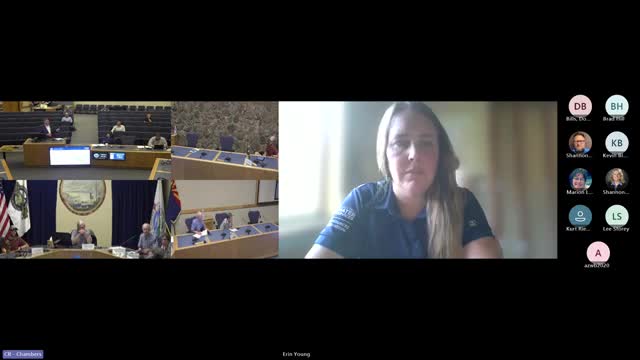Pipeline project overcomes major hurdles to move forward
July 25, 2024 | Flagstaff City, Coconino County, Arizona

This article was created by AI summarizing key points discussed. AI makes mistakes, so for full details and context, please refer to the video of the full meeting. Please report any errors so we can fix them. Report an error »

In a recent government meeting, officials provided an update on the progress of a significant pipeline project that has faced numerous challenges since its inception. The project, which began with a phase 1 study in 2010, has now advanced to the completion of a phase 2 study, with a draft report available for review.
The pipeline's route is divided into three segments: Segment 1 runs from Red Gap to Twin Arrows, Segment 2 extends from Twin Arrows to Winona, and Segment 3 leads into the city limits. The discussions highlighted the complexities of securing right-of-way access, particularly due to the checkerboard land ownership involving the Hopi and Arizona State Land Department (ASLD). After exploring various alternatives, including a southern detour that proved economically unfeasible, the team successfully negotiated an intergovernmental agreement (IGA) with the Arizona Department of Transportation (ADOT) in 2016, allowing the pipeline to be placed within the I-40 right-of-way.
The meeting also addressed the need for an emergency response plan in collaboration with ADOT, which is crucial for managing potential pipeline incidents that could disrupt transportation along I-40. Design criteria for the pipeline are still being finalized, with discussions ongoing regarding the minimum cover required over the pipeline—ADOT's standard of five feet versus the city's proposed four feet.
Land acquisition efforts have progressed, with most of the necessary ASLD right-of-way secured. The team is currently working on acquiring sites for pump stations, which will be located outside the right-of-way at key intersections.
The pipeline is designed to initially carry 12,000 acre-feet of water per year, with the potential to increase capacity to 16,000 acre-feet by extending the delivery schedule. The recommended material for the pipeline is welded steel, chosen for its durability and suitability for high-pressure applications.
Geotechnical assessments revealed a mix of alluvial soil and shallow bedrock along the proposed route, which will influence construction methods and costs. The team anticipates using directional drilling to navigate major canyons, although alternative methods such as pipe bridges may also be considered during final design.
Overall, the meeting underscored the project's complexity and the collaborative efforts required to navigate regulatory, environmental, and logistical challenges as it moves forward.
The pipeline's route is divided into three segments: Segment 1 runs from Red Gap to Twin Arrows, Segment 2 extends from Twin Arrows to Winona, and Segment 3 leads into the city limits. The discussions highlighted the complexities of securing right-of-way access, particularly due to the checkerboard land ownership involving the Hopi and Arizona State Land Department (ASLD). After exploring various alternatives, including a southern detour that proved economically unfeasible, the team successfully negotiated an intergovernmental agreement (IGA) with the Arizona Department of Transportation (ADOT) in 2016, allowing the pipeline to be placed within the I-40 right-of-way.
The meeting also addressed the need for an emergency response plan in collaboration with ADOT, which is crucial for managing potential pipeline incidents that could disrupt transportation along I-40. Design criteria for the pipeline are still being finalized, with discussions ongoing regarding the minimum cover required over the pipeline—ADOT's standard of five feet versus the city's proposed four feet.
Land acquisition efforts have progressed, with most of the necessary ASLD right-of-way secured. The team is currently working on acquiring sites for pump stations, which will be located outside the right-of-way at key intersections.
The pipeline is designed to initially carry 12,000 acre-feet of water per year, with the potential to increase capacity to 16,000 acre-feet by extending the delivery schedule. The recommended material for the pipeline is welded steel, chosen for its durability and suitability for high-pressure applications.
Geotechnical assessments revealed a mix of alluvial soil and shallow bedrock along the proposed route, which will influence construction methods and costs. The team anticipates using directional drilling to navigate major canyons, although alternative methods such as pipe bridges may also be considered during final design.
Overall, the meeting underscored the project's complexity and the collaborative efforts required to navigate regulatory, environmental, and logistical challenges as it moves forward.
View full meeting
This article is based on a recent meeting—watch the full video and explore the complete transcript for deeper insights into the discussion.
View full meeting
